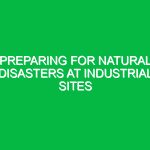In a world increasingly encroached upon by human activity, the intersection of wildlife encounters and emergencies related to Health, Safety, and Environment (HSE) has become a pressing concern. With natural habitats shrinking and wildlife populations facing unprecedented threats, understanding how to navigate these encounters during emergencies is essential. This article delves into the complexities of wildlife encounters, the associated risks, safety precautions, and the regulations that govern these situations. By the end, you will be better equipped to manage wildlife encounters effectively, ensuring both human safety and wildlife protection.
Understanding Wildlife Encounters During Emergencies
Wildlife encounters refer to situations where humans come into contact with wild animals, often in unexpected or challenging circumstances. When emergencies arise—be it natural disasters, industrial accidents, or public health crises—these encounters can escalate quickly. For instance, during a wildfire, wildlife may flee their natural habitats and intrude into human-populated areas, leading to potentially dangerous situations.
The relevance of wildlife encounters in the HSE domain cannot be overstated. Emergencies often disrupt the natural behaviors and habitats of wildlife, forcing animals into proximity with humans. This can lead to injuries, property damage, and even threats to human life. Moreover, the protection of wildlife during such emergencies is crucial. Uncontrolled encounters can result in negative outcomes for both humans and animals, emphasizing the need for structured protocols and safety measures.
Identifying Hazards and Risks Associated with Wildlife Encounters
Understanding the potential hazards and risks associated with wildlife encounters during emergencies is the first step toward effective management. Various factors contribute to these risks:
1. Direct Threats from Wildlife
Animals, when frightened or injured, may exhibit aggressive behavior. For example, a deer or bear may charge if it feels cornered. Such actions can lead to severe injuries for individuals caught in the path of an agitated animal.
2. Zoonotic Diseases
Wildlife can be carriers of diseases that are transmissible to humans. Encounters with animals, especially during emergencies when their natural habitats are disrupted, increase the risk of disease transmission. Consider the emergence of West Nile virus, which is often associated with bird populations. During flooding, the risk of encountering infected wildlife is heightened.
3. Property Damage
Wild animals may cause significant property damage when they invade human settlements in search of food or shelter. This can lead to economic losses and safety hazards. For instance, raccoons rummaging through garbage can create unsanitary conditions, leading to further complications.
4. Environmental Impact
When wildlife is displaced due to emergencies, there can be a cascading effect on ecosystems. For example, if a flood forces beavers to relocate, their absence can lead to overgrowth in certain areas, altering the habitat for other species and potentially leading to further wildlife conflicts.
Safety Precautions and Best Practices for Wildlife Encounters
Having a plan in place can significantly mitigate the risks associated with wildlife encounters during emergencies. Here are some actionable safety precautions and best practices:
1. Awareness and Education
Education is critical. Communities should be educated about the types of wildlife they may encounter in their area and the appropriate responses to various situations. For example, understanding the behavior of local bears can help individuals avoid dangerous encounters. Public workshops and information campaigns can serve as effective tools in this regard.
2. Emergency Response Plans
Organizations, particularly those operating in wildlife-rich areas, should have tailored emergency response plans that include procedures for wildlife encounters. These plans should outline steps for evacuation, reporting wildlife sightings, and safely securing food and waste to avoid attracting animals.
3. First Aid Training
Training in first aid for wildlife-related injuries can be invaluable. Understanding how to handle bites or stings, as well as how to recognize symptoms of zoonotic diseases, can save lives. Regular training sessions can prepare individuals for real-life scenarios.
4. Humane Wildlife Handling Techniques
In emergencies, wildlife may need to be relocated for their safety and that of humans. Employing humane trapping and relocation techniques is essential. This includes using proper equipment and understanding animal behavior to minimize stress during the capture process. Organizations like the Humane Society provide resources and guidelines on humane wildlife management.
5. Reporting Mechanisms
Establishing clear reporting mechanisms for wildlife encounters during emergencies can enhance response strategies. Individuals should know whom to contact in case of an emergency involving wildlife, ensuring swift action is taken to resolve the situation safely.
Regulations and Standards Governing Wildlife Encounters During Emergencies
Several regulations and standards govern wildlife encounters and protection during emergencies, ensuring both human safety and wildlife conservation. Familiarity with these regulations is crucial for effective management:
1. Endangered Species Act (ESA)
The ESA protects threatened and endangered species and their habitats. During emergencies, this act mandates that organizations take necessary precautions to avoid harming these species, even in chaotic situations.
2. National Environmental Policy Act (NEPA)
NEPA requires federal agencies to assess the environmental impacts of their actions, including those related to wildlife encounters. This means that emergency response plans must consider potential impacts on local wildlife and habitats.
3. Local Wildlife Protection Laws
Many regions have specific wildlife protection laws that outline how to handle wildlife encounters. Understanding these local regulations is crucial for compliance and effective response. For example, some areas may have restrictions on relocating certain species without permits.
4. Occupational Safety and Health Administration (OSHA) Standards
OSHA provides guidelines that can be applied to ensure worker safety during wildlife encounters. These standards can help organizations develop comprehensive safety protocols that include wildlife management.
Conclusion
As the natural world continues to intersect with human life, the importance of understanding wildlife encounters and protection during emergencies cannot be understated. By recognizing the risks, implementing safety precautions, and adhering to regulations, we can foster a safer environment for both people and wildlife. Whether you are a community member, an organization, or a policy maker, your role in this ecosystem is critical. Together, we can navigate the complexities of wildlife encounters with respect and care, ensuring a more harmonious coexistence.


